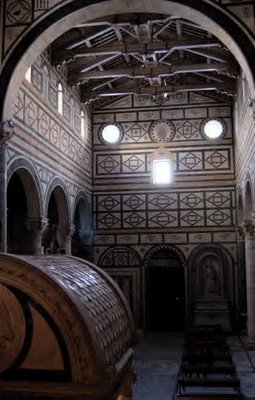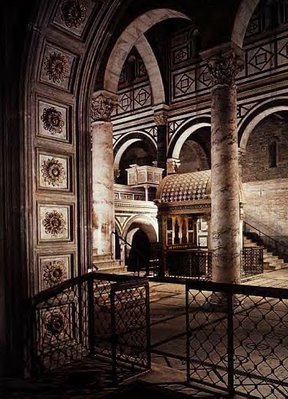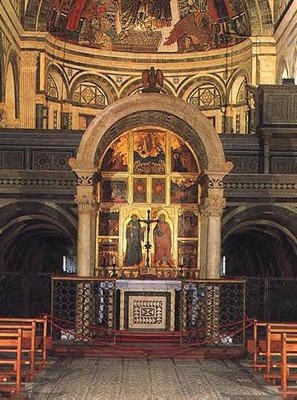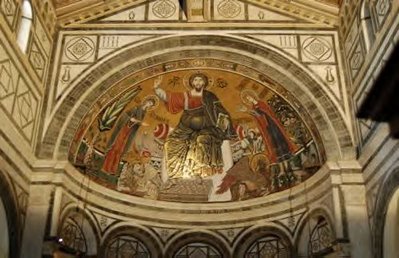The side (lateral) naves were finished in 1070. The last phase of construction was completed in 1207.
The Basilica is divided into three naves without a transept.

Nave: View towards rear from Tabernacle
The exact proportions of the Church and the strict geometrical design as seen in the luminous and chromatic insertion of the mosaics derive directly from Classical and Byzantine Art.

Tabernacle
The Tabernacle
The chapel commissioned by Piero di Cosimo de' Medici and attributed to Bernardo Rossellino (or perhaps Michelozzo as Varasi claims) was built to hold the Crucifix of St. John Gualberto.
The two columns and the two half-pilasters each have capitals of a different order supporting a classical entablature.
On this rests the elaborate barrelled vault in glazed blue and white terracotta.
The external part of the tri-colored glazed tiled roof is by Luca della Robbia (1399/1400-1482).
The panels on the altar begun by Agnolo Gaddi in 1394 and unfinished at the time of his death in 1396 represent Saint John Gualberto in an austere black monk's cloak and Saint Minias in colorful oriental attire.
At the sides are scenes from the Passion of Christ; above, in the crown of the arch, is the Ascension flanked by the Annunciation, and in the predella, Mary and the twelve apostles.

Side view: Tabernacle and Nave
The mosaic in the bowl-shaped vault of the apse (ca.1260) portrays Christ the Pantocrator between Mary, St. Minias and the symbols of the four Evangelists.
The figures stand out Byzantine-style against a gold background in a field populated with orientai birds (symbolizing souls).
On the left, there is a date palm, symbol of Christ Resurrected.
The phoenix on the right, spouting flames from its beak, and the peacock on the left are both symbols of the Resurrection of Christ.




No comments:
Post a Comment